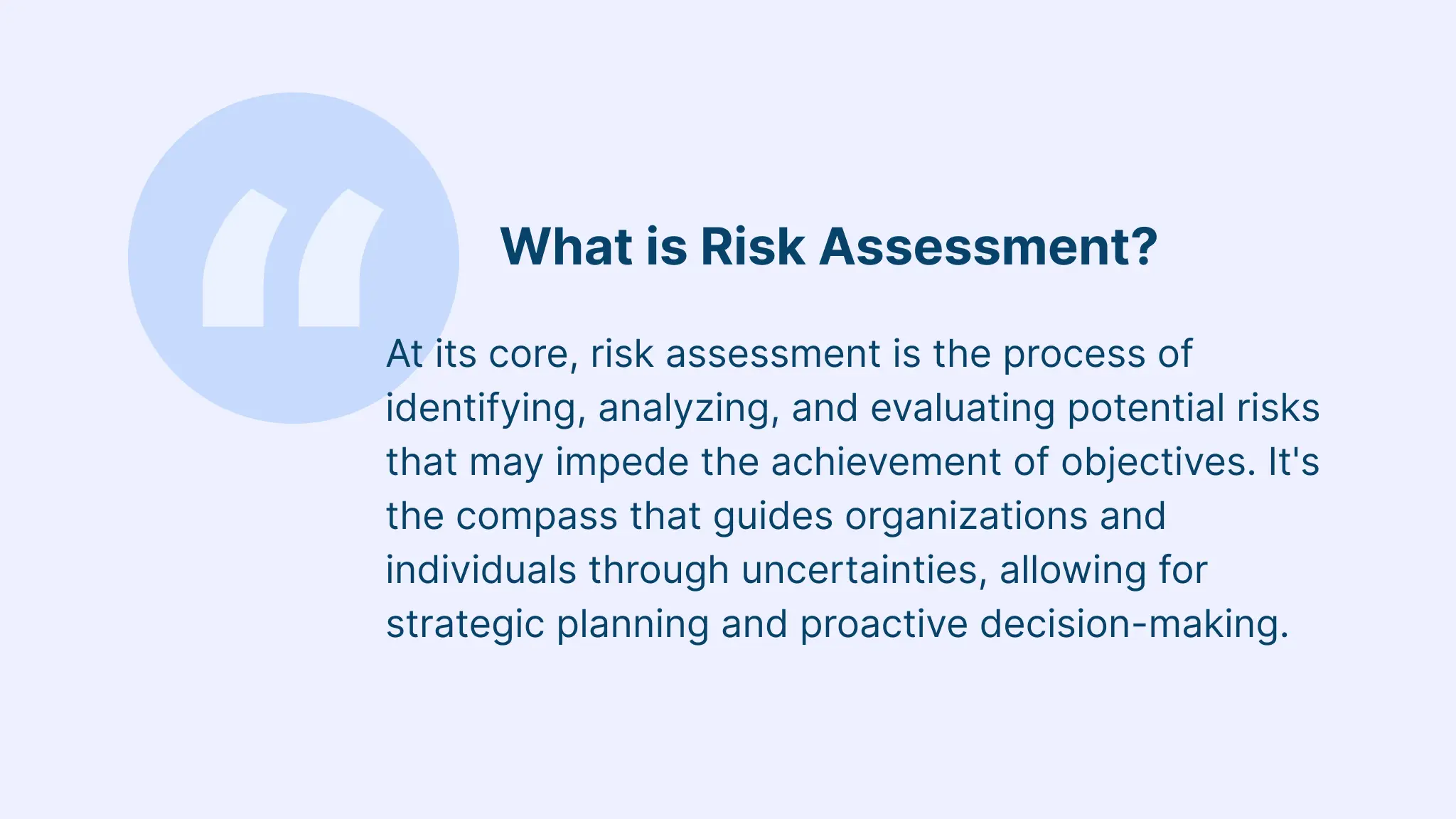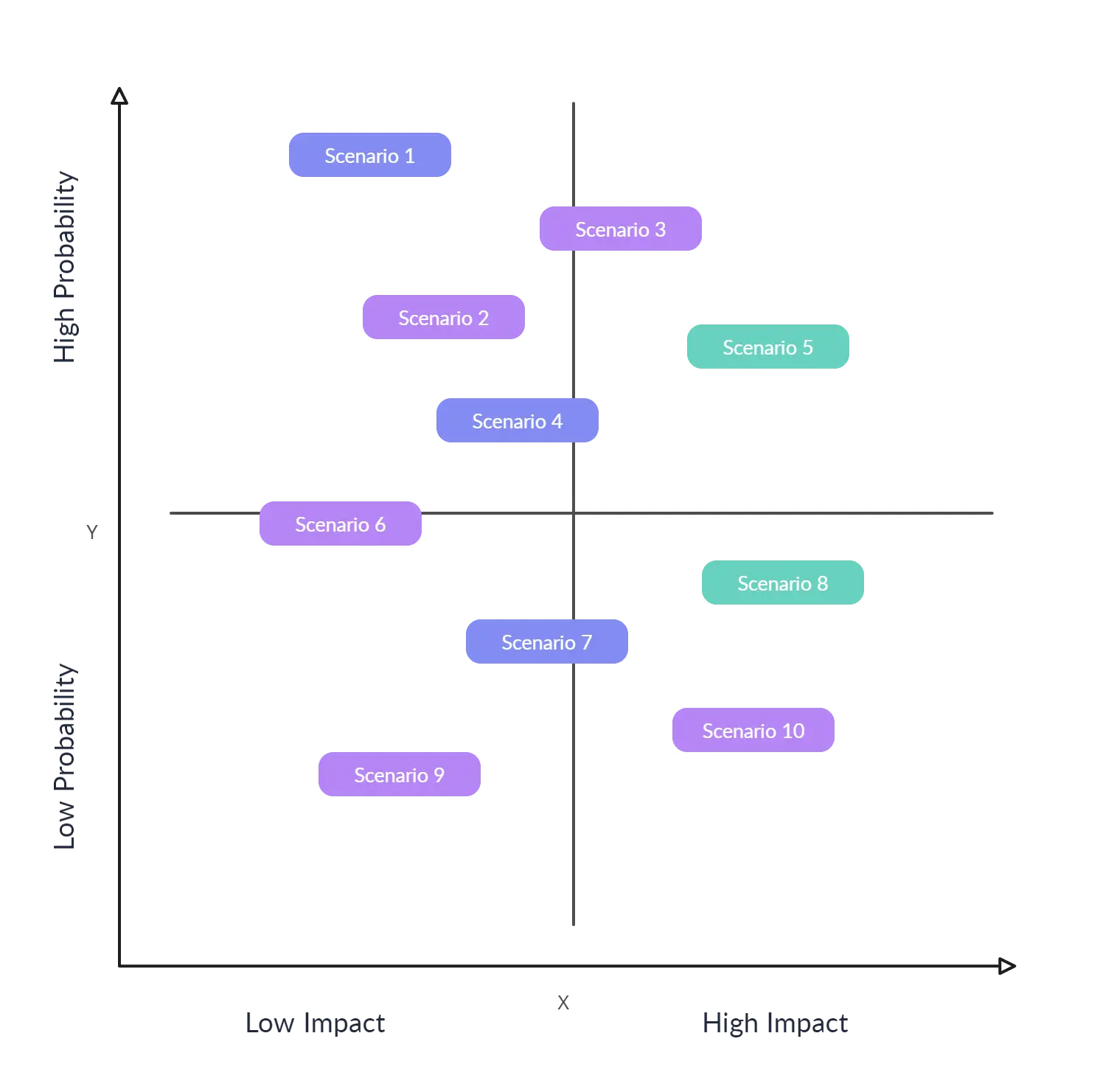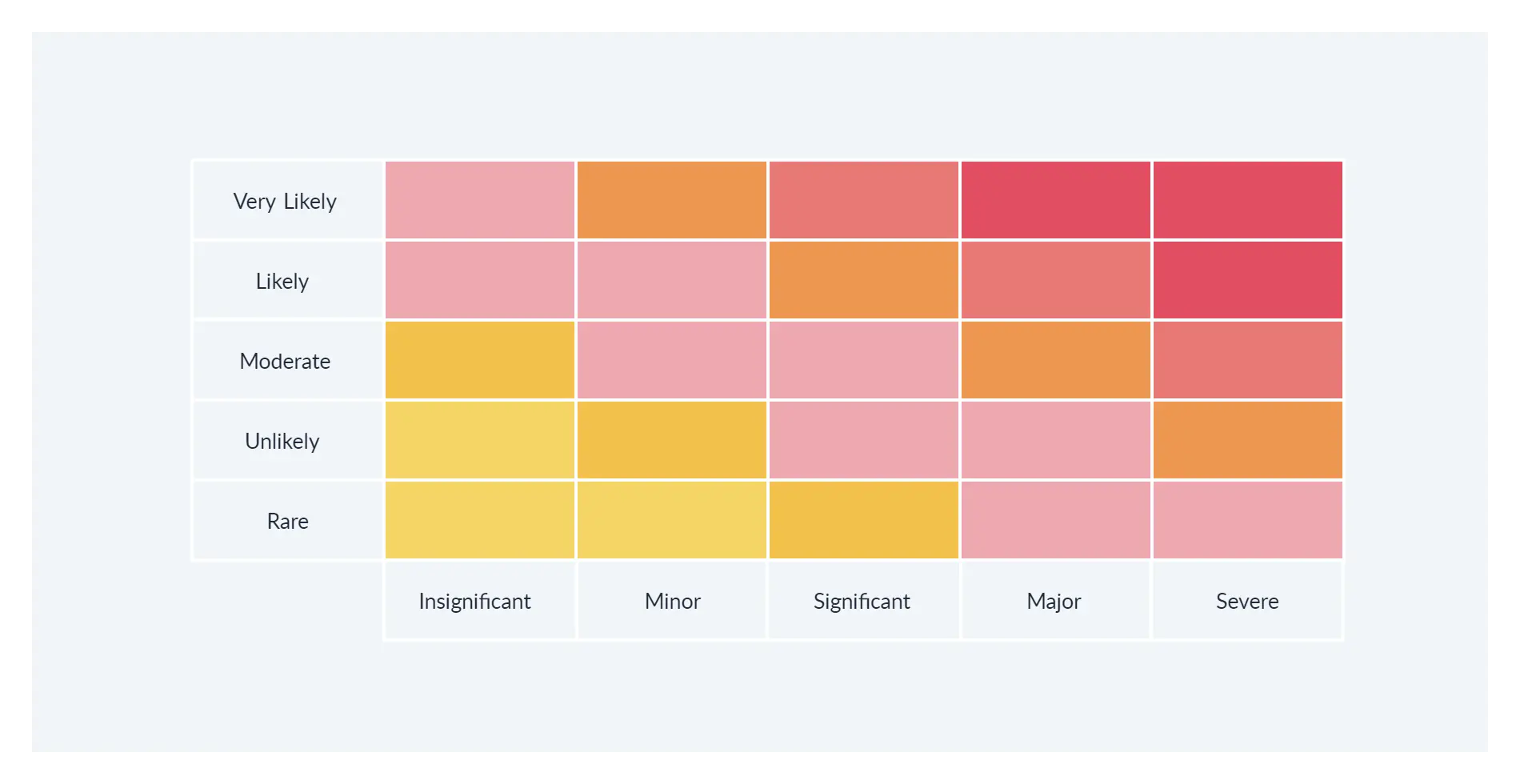Without risk, there is no innovation. It is good for organizations to have a healthy risk appetite, but it should never be at the compromise of safety and mismanagement.
Imagine if OceanGate had conducted a thorough risk assessment prior to Titan’s expedition to explore the Titanic wreckage. Had there been a risk assessment process in place, they would not have overlooked the design flaws of the submersible and the fact that it had not been adequately tested prior to launching for commercial operations; and the catastrophe that followed could have been averted. This incident explains why having a risk assessment process is extremely important.
In this blog post, we’ll unravel the essence of risk assessment, explore the difference between risks and hazards, explore crucial steps in the risk assessment process, and uncover the benefits of having an effective risk management plan.

- What is the Risk Assessment Process?
- Risk Assessment Process Template
- The Difference Between a Risk and Hazard
- Steps in the Risk Assessment Process
- Benefits of Having an Aligned Risk Management Process
- Real-World Example
- Common Mistakes in Risk Assessment Process
- Wrapping Up
What is the Risk Assessment Process?
The risk assessment process is the strategy businesses use to address potential issues. It’s all about understanding what could go wrong and how it might affect the goals of the company, in a systematic way. Picture it as a detective mission to identify hazards — whether they’re money-related, day-to-day operations stuff, big-picture plans, or following the rules. By looking at how likely these hazards are and how bad they could get, businesses get a clear view of the risks they’re up against.
Risk assessment isn’t a one-time thing; it’s an ongoing process that needs regular check-ins and adjustments. Think of it as a trusty guide that helps businesses stay away from trouble and move confidently into a future that’s more secure and ready for anything.
Risk Assessment Process Template
The Difference Between a Risk and Hazard
Before delving further, let’s dispel a common misconception – the interchangeable use of ‘risk’ and ‘hazard.’ A hazard is a potential source of harm or adverse health effect, like a chemical substance or a slippery floor. On the flip side, risk is the likelihood and severity of the harm occurring from a hazard. While a hazard may exist without risk, risk cannot materialize without a hazard. Think of hazards as potential threats and risks as the probability of those threats turning into actual harm.
Identification of Hazards
Risk assessment starts with identifying, analyzing, and evaluating potential risks to figure out how likely and how serious a harm would be if it came true. This includes physical, chemical, biological, and even psychological hazards. During this step, you can use the risk probability and impact matrix.
Risk Analysis
Dive into the details. With the risk matrix, you can visually organize the risks into different categories based on their likelihood and severity. This makes it easier to identify which risks need to be addressed and how urgently.
Risk Evaluation
Determine whether the risks identified are acceptable or if additional control measures are necessary. Consider the context and specific circumstances surrounding each risk. The risk register template will help you list out these circumstances and identify the right course of action.
Risk Treatment
Implement strategies to control or mitigate risks. This could involve modifying processes, introducing safety measures, or even transferring the risk through insurance. It is important to identify potential risks and develop strategies to reduce them. These strategies should be tailored to the specific situation and should be regularly reviewed and updated to ensure that the risks are managed effectively.
Monitoring and Review
The risk assessment process is not a one-time event. Regularly review and update your risk assessment, especially when there are significant changes in the organization, processes, or external environment. This is because risk assessment is a continuous process, and the risks and threats associated with an organization can change quickly. It is important to regularly review and analyze your risk assessment to ensure that it is still valid and up-to-date.
Benefits of Having an Aligned Risk Management Process
Proactive Decision-Making: Armed with insights from the risk assessment process, you can make informed decisions that anticipate and mitigate potential issues.
Enhanced Resilience: A robust risk management plan not only shields you from uncertainties but also enhances your ability to bounce back when faced with unexpected challenges.
Improved Resource Allocation: Identifying and prioritizing risks allows you to allocate resources efficiently, focusing on areas that pose the greatest threat to your objectives.
Regulatory Compliance: Many industries have stringent regulatory requirements. A well-defined risk management plan ensures compliance, avoiding legal pitfalls.
Real-World Example
In the world of project management, a failure to identify and mitigate risks led to the infamous Challenger disaster in 1986. The overlooked risk of O-ring failure in cold temperatures resulted in the tragic loss of seven lives and highlighted the critical importance of thorough risk assessment.
Common Mistakes in Risk Assessment Process
Ignoring Low Probability-High Impact Risks: Some risks might seem unlikely but could have severe consequences. Ignoring these ‘black swan’ events can lead to catastrophic outcomes.
Lack of Stakeholder Involvement: The risk assessment process should be a collaborative effort. Failing to involve key stakeholders may result in overlooking crucial insights and perspectives.
Static Risk Assessments: Your business is dynamic, and so are its risks. A static risk assessment that doesn’t adapt to changes in the internal or external environment is a recipe for disaster.
Wrapping Up
The business environment is volatile, which is why your business needs a risk assessment process to mitigate potential risks and navigate through challenges successfully. Differentiating between hazards and risks, understanding the steps in the process, and crafting a robust risk management plan are all essential elements of ensuring a secure journey.
Ready to fortify your business against uncertainties? Start by implementing a comprehensive risk assessment process and crafting a robust risk management plan. Your secure future awaits!
In the ever-changing landscape of business, the ability to navigate risks is not just a skill; it’s a survival instinct. Equip yourself with the knowledge and tools to steer through the storm, and let the journey be as rewarding as the destination.








